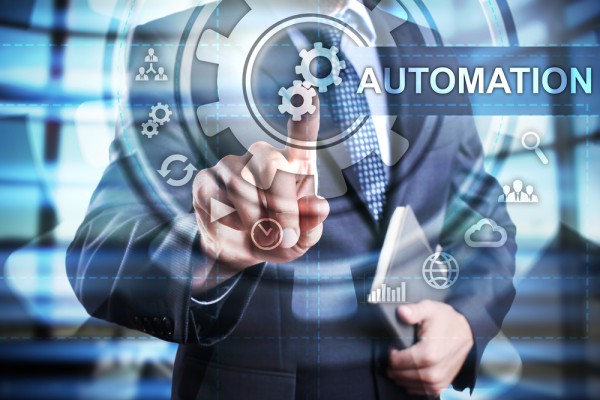6 developments in autonomous tech, coming soon

As more industries find themselves searching for viable solutions to common problems, they look towards automation. The concept of artificial intelligence (AI) has evolved over the years, and new applications for automation are emerging. It seems as though the world is moving towards automation rapidly, and industries will need to adopt this technology to stay ahead of the competition.
Continue reading to learn more about six autonomous technologies being developed that will change the way industries operate. They will contribute to higher levels of efficiency and productivity by complementing existing technologies.
It’s no secret that the future looks bright for autonomous technology. There are many use cases for this kind of technology, and more industries will likely be willing to adopt it in the near future.
With the rapid development of artificial intelligence (AI) and machine learning (ML), it shouldn’t come as a surprise that automation will break into industries ranging from retail to architecture. By leveraging these advanced technologies, enterprises will be able to expand and thrive in a competitive landscape.
Below are six examples of autonomous technologies currently being developed and how they’ll change the way industries operate once they’re implemented.
6 Autonomous Technologies Under Development
Although advancements are showing promise for the future, it’s crucial to identify their use cases. Finding innovative ways to apply AI and ML to increase the uses for automation in industries will be necessary moving forward.
1. Software
The goal of automation is to limit the need for human intervention. In the software world, one of the applications for autonomous tech is in the low-code world. Low-code architecture development is essentially creating software applications more efficiently with little to no code processing involved. Many big companies offer low-code solutions to their customers.
Low-code/no-code (LCNC) is already deploying test bots to test automation and verify software code. It’s anticipated that many enterprises will adopt LCNC tech and integrate it into their existing software development plans.
2. Robotaxis
When the average person thinks about automation, their first thought goes to vehicles. Self-driving cars are on the rise, with companies like Tesla leading the industry. There’s also talk about Ford and Argo launching driverless cars in a partnership with Lyft by the end of 2021.
The technology used to power these fully autonomous vehicles (AVs) is still under development. There are six levels of automation that will pave the way for consumer adoption of AVs. For driverless cars to hit the market, they’ll have to pass the six levels. Here they are:
- Level 0: No automation
- Level 1: Driver assistance
- Level 2: Partial automation
- Level 3: Conditional automation
- Level 4: High automation
- Level 5: Full automation
Tesla claims that there will be fully automated robotaxis parading around different jurisdictions where regulations allow them. However, Elon Musk made this claim back in 2019, so it’ll be interesting to see the concept come to fruition.
3. Power Plants
Siemens Energy is ready to launch automated power plants -- and the technology to do so is ready for application. According to Siemens, there’s a need for automation due to the shortcomings of existing power plant technologies.
Power plants already have smart analyses, the ability to forecast, and smart recommendations and instructions. Power plant personnel have reaped the benefits of automation. In some plants, personnel no longer have to make manual inspection rounds to check for leaks, operating values, and unusual noises. This means they can spend more time completing more critical tasks.
4. Military Drones
Creating an effective military strategy is crucial for countries all across the globe. Automated military drones are perfect for gathering real-time intelligence about various locations. This can help inform military leaders when they’re making split-second decisions.
Military-grade autonomous drones are capable of participating in combat without the need for human intervention. The first fully autonomous drone made its combat debut in Libya, but there were no reported cases of drones killing soldiers on the battlefield. It would be a milestone in military technology if this were to happen, which is possible in the future.
5. Commercial Vehicle Diagnostics
Truck technology is complex, and the industry is focusing on autonomous diagnostic capabilities to meet that complexity. Technicians would typically rely on physical inspection to find issues with their trucks, but they’ll be able to diagnose their proprietary parts more efficiently with advanced technology.
Over the last few decades, trucks have more frequently been equipped with electronic control units (ECU), and it’s a trend likely to continue. More trucks will have the systems needed to reach the level of automation that enables them to self-diagnose and self-heal. The goal is to make truck repairs seamless through redundancy and reduce the need for future maintenance.
6. Vaccines
When the COVID-19 pandemic took over in March 2020, there was a rush to develop a viable vaccine to protect individuals from the deadly virus. Researchers used AI models to analyze large amounts of data to learn more about the virus and fight it.
Machine learning models also contributed to coronavirus vaccine development. It was used to help guide researchers and design targeted vaccines that produce an immune response. Because of the successful development of this vaccine, future vaccines may be developed using the same technology.
An Automated Future Across Industries
Some believe that an autonomous future will threaten human survival, like in science fiction movies. In contrast, others think it will help complement existing technology and make various industries more efficient in their processes.
More than likely, autonomous technology will help empower industries to reach higher levels of productivity and efficiency. Of course, like all types of technology, autonomous tech comes with pros and cons.
Photo Credit: Wright Studio/Shutterstock

Devin Partida writes about AI, apps and technology at ReHack.com, where she is Editor-in-Chief
